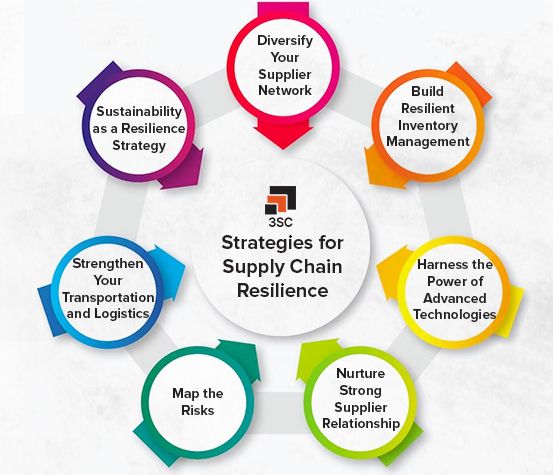How to Build a Resilient Supply Chain
In today’s fast-paced business environment, having a resilient supply chain is crucial for success. A resilient supply chain can help businesses navigate through disruptions such as natural disasters, political unrest, and economic downturns. It allows companies to quickly adapt to changing circumstances and continue to meet customer demands.
Key Components of a Resilient Supply Chain
There are several key components that make up a resilient supply chain. These include:
Diversification: Having multiple suppliers and distribution channels can help mitigate risks and ensure continuity of supply.
Visibility: Real-time visibility into the entire supply chain can help identify potential disruptions and take proactive measures to mitigate them.
Collaboration: Strong partnerships with suppliers, customers, and other stakeholders can help streamline communication and response to disruptions.
Adaptability: Being able to quickly pivot and make changes to the supply chain in response to disruptions is essential for resilience.
Technology: Utilizing advanced technologies such as AI, IoT, and analytics can help optimize supply chain operations and enhance resilience.
Steps to Building a Resilient Supply Chain
Building a resilient supply chain requires a comprehensive strategy and careful implementation. Here are some steps to help you build a resilient supply chain:
Assess and Identify Risks
Start by conducting a thorough assessment of your supply chain to identify potential risks and vulnerabilities. This could include mapping out your suppliers, transportation routes, and critical dependencies.
Develop a Contingency Plan
Once you have identified the risks, develop a contingency plan that outlines how you will respond to disruptions. This plan should include protocols for communication, alternative suppliers, and backup transportation options.
Invest in Technology
Investing in technologies that provide real-time visibility and analytics can help you better understand and optimize your supply chain. Consider implementing a supply chain management system that integrates data from all parts of the supply chain.
Strengthen Relationships
Building strong relationships with your suppliers, customers, and other stakeholders can help you collaborate more effectively during disruptions. Consider holding regular meetings and sharing information proactively.
Monitor and Evaluate
Continuously monitor and evaluate your supply chain performance to identify areas for improvement. Regularly review your contingency plan and make adjustments as needed.
Conclusion
Building a resilient supply chain is essential for businesses looking to thrive in today’s unpredictable business landscape. By following these steps and focusing on key components such as diversification, visibility, collaboration, adaptability, and technology, you can create a supply chain that can withstand disruptions and continue to deliver value to your customers.


